#cornish riviera
Text
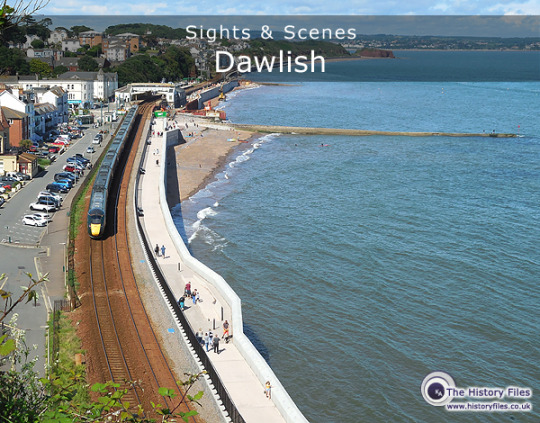
Sights & Scenes: Dawlish, Devon
The town of Dawlish in the county of Devon is a traditional seaside town, one which has a wonderful golden sand beach on its doorstep, just twenty-four kilometres from Exeter.
2 notes
·
View notes
Photo
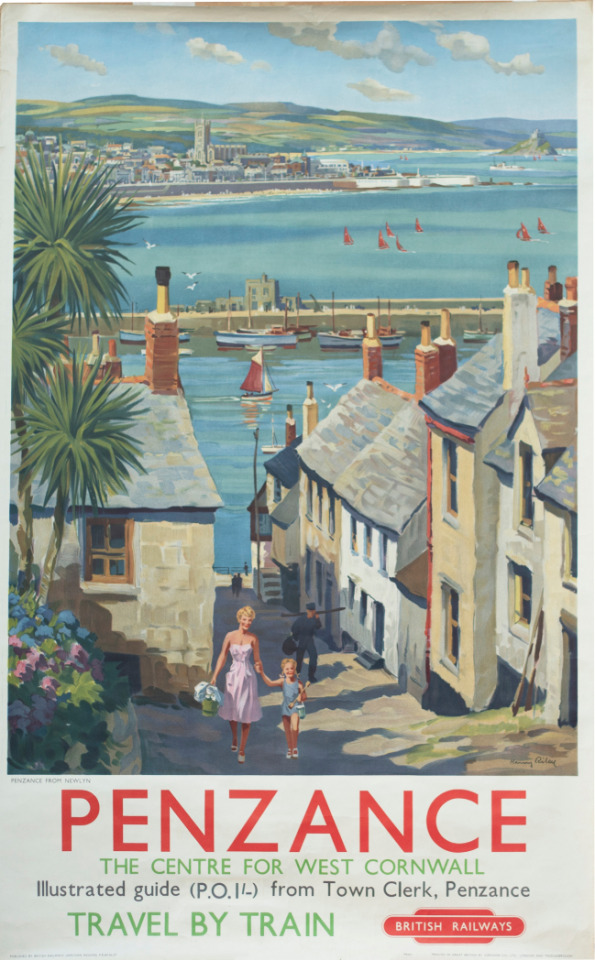

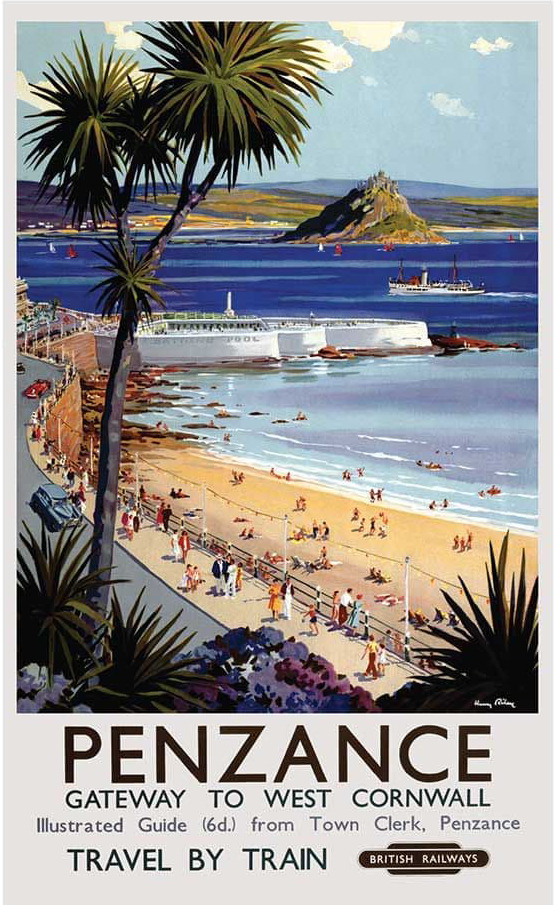

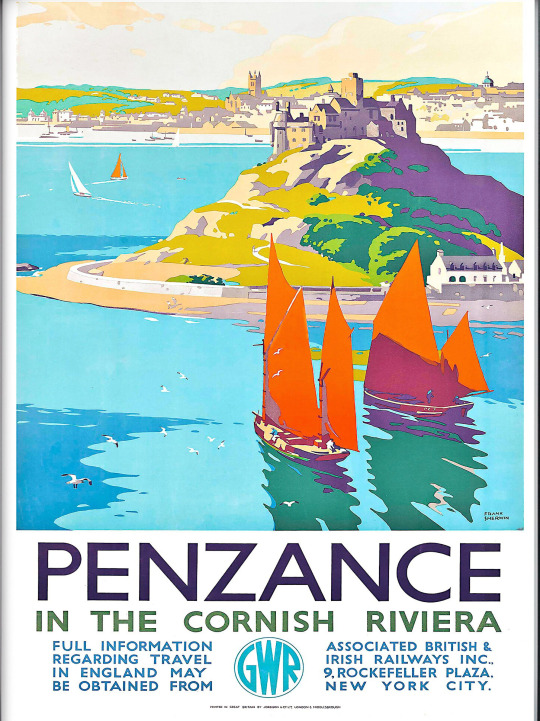
Una serie de carteles turiísticos ingleses.
Penzance, un nombre rarísimo para un pueblo inglés, esta en lo que llaman The Cornish Riviera.
Muy guapo, pero de eso a llamarlo Riviera.
Que inocentes son los británicos.
3 notes
·
View notes
Text
Devon and Cornwall - A „Rosamunde Pilcher“ Trip
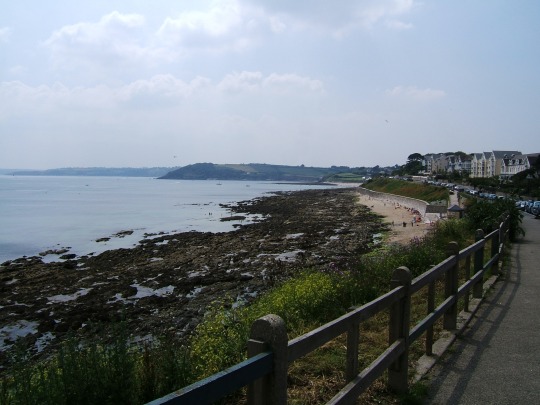
Falmouth (Cornwall)
While visiting a flea market in the 90s, I bought a few short stories by Rosamunde Pilcher: trivial literature - usually between 200-300 pages for entertainment on the train or plane. For a while it was also very popular to show movie adaptations of her stories on German television. This made people familiar with the Cornish landscape, where many of her stories are set.
I've always wanted to get to know rural England, so my wife and I booked a "Rosamunde Pilcher“ trip (that's actually how the travel provider advertised it) through southern England with the following route: London - Salisbury (Cathedral of Salisbury) - Stonehenge - Bath - Dartmoor - Torquay - Falmouth - St Ives - Land’s End - Plymouth (Mount Edgecumbe) - Portsmouth.
In addition to beautiful St. Ives and Mount Edgecumbe, another highlight of the trip was two nights in an old manor house in Devon that a couple had lovingly renovated and converted into a bed & breakfast. The couple had lived in Kenya for years and had only returned to England a few years ago.
On the journey home it was essential to make a quick detour to Portsmouth to see HMS Victory - Nelson's flagship at the decisive naval battle of Tragalfar over a Franco-Spanish fleet in 1805.

London - Horse Guard
Beim Besuch eines Flohmarkts erstand ich in den 90igern ein paar Kurzgeschichten von Rosamunde Pilcher: Trivialliteratur - meist zwischen 200-300 Seiten für Kurzweil im Zug oder Flugzeug. Es war auch eine Zeit lang sehr beliebt, im deutschen Fernsehen Verfilmungen ihrer Geschichten zu zeigen. Man wurde dadurch mit der Landschaft Cornwalls vertraut , wo viele ihrer Geschichten angesiedelt sind.
Ich wollte schon immer das ländliche England kennenlernen, deshalb buchten meine Frau und ich einen „Rosamunde-Pilcher“-Trip (so preiste ihn der Reiseveranstalter tatsächlich an) durch Süd-England mit folgender Route: London - Salisbury (Cathedral of Salisbury) - Stonehenge - Bath - Dartmoor - Torquay - Falmouth - St Ives - Land’s End - Plymouth (Mount Edgecumbe) - Portsmouth.
Neben dem schönen St. Ives und Mount Edgecumbe war ein weiteres Highlight der Reise zwei Übernachtungen in einem alten Herrenhaus in Devon, das ein Paar liebevoll renoviert und in ein Bed & Breakfast umgebaut hatte. Das Paar hatte jahrelang in Kenia gelebt und war erst vor wenigen Jahren nach England zurückgekehrt.
Auf der Heimreise musste es unbedingt ein kurzer Abstecher nach Portsmouth sein, um die HMS Victory zu besichtigen - das Flagschiff von Nelson bei der entscheidenden Seeschlacht von Tragalfar über eine französisch-spanische Flotte in 1805.

Torquay (British Riviera - Devon)
-Simplicius Simplicissimus
#traveling#reisen#rosamunde pilcher#england#devon#cornwall#portsmouth#hms victory#simplicius simplicissimus
0 notes
Link
Check out this listing I just added to my Poshmark closet: Peril at End House: A Hercule Poirot Mystery Book by Agatha Christie.
0 notes
Link
#trains#famous trains#post cards#vintage post cards#stamps#vintage stamps#collectible#Flying scotsman#royal ascot#Cheltenham flyer#Golden arrow#Cornish riviera
0 notes
Photo
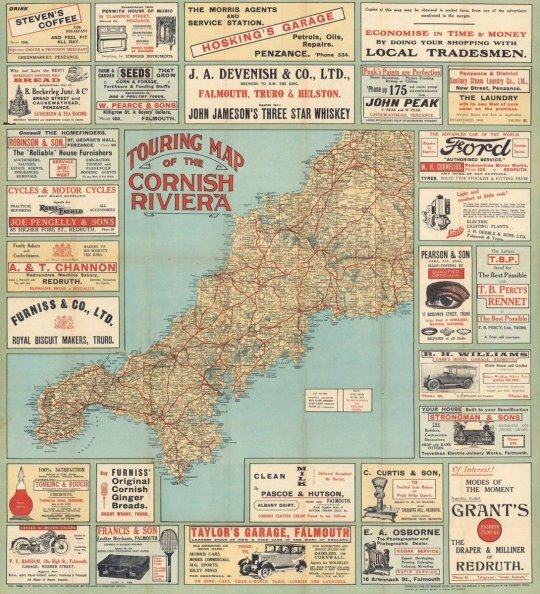
The "Cornish Riviera," 1928 This one we are filing under oxymoron unless otherwise convinced.
by @rumseymapcenter
145 notes
·
View notes
Photo

Louis Burleigh Bruhl [1862–1942]
The Cornish Riviera
72 notes
·
View notes
Photo

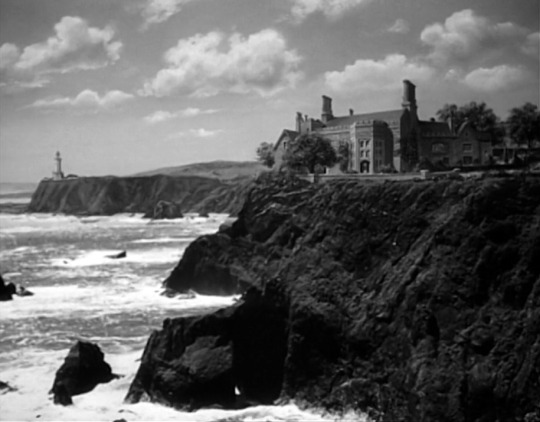


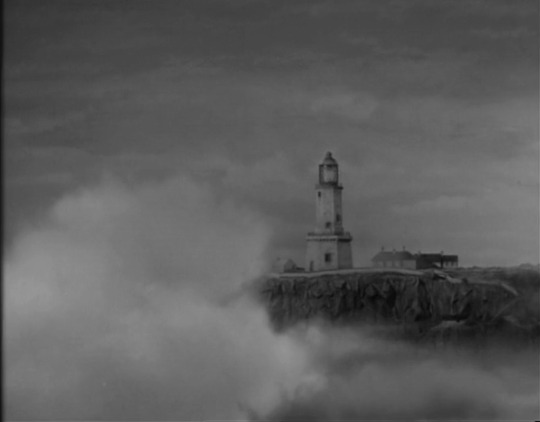




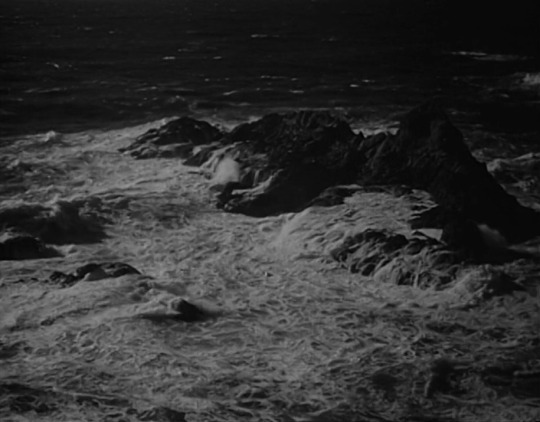
The Cornish Coast in The Sign of the Ram (1948)
Shot at Lizard Point, Cornwall, England (+ some compositing of the house and lighthouse)
In the establishing shots at the start of the film, Sherida Binyon’s (Phyllis Thaxter) arrival by train to “The Cornish Riviera” is suggested by shots of a fictional rail station called Tremerrion. This sequence includes a real Great Western Railway poster painted by Frank Newbould, which was used to advertise the route from London’s Paddington station to Cornwall. The poster was apparently in use from 1923-1947. Amazingly, this sequence does not have a single shot of a train!
I appreciate the cheekiness of introducing the film’s setting with an idyllic painting of a quaint fishing village shielded by cliffs when that is so far from what The Sign of the Ram depicts.
Here’s the poster in color:
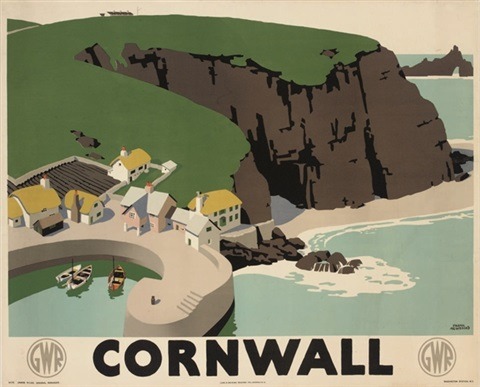
This particular poster isn’t included on the National Railway Museum’s website, but there are a lot of other wonderful posters featured in their online collection.
#The Sign of the Ram#1940s#john sturges#1948#film noir#classic film#classic movies#Cornwall#great western railway#trains#poster art#travel posters#travel poster#cornish coast#frank newbould#National Railway Museum
85 notes
·
View notes
Photo

#StIves #Cornwall #Cornish #Riviera (at Porthminster beach St Ives,) https://www.instagram.com/p/B0tII63nxe0/?igshid=1dvlo7y37204i
0 notes
Video
The Cornish Riviera Express por Peter Stephens
Por Flickr:
The Cornish Riviera Express, engines GWR King Class 4-6-0 no 6024 King Edward 1 and GWR Castle Class 4-6-0 no 5029 Nunncy Castle heading towards Bristol then London Paddington. Photographed at Cowley Bridge in Exeter, Devon.
7 notes
·
View notes
Video
Cornish Riviera Statesman by Steve Tucker
Via Flickr:
Locomotive Services Limited Class 47's accelerate through Wadborough, Worcestershire. shortly after departing Abbotswood Junction in charge of Statesman Rails 'The Cornish Riviera Statesman' 1Z45 0510 Wolverhampton to Penzance. 2nd June 21
4 notes
·
View notes
Text
I went to see Rebecca in the cinema yesterday. An actual, real cinema. I was so excited to be in one I watched all the end credits.
It’s a good film but because I’d only just read the book I found myself comparing them which isn’t necessarily a good thing. The main plot is the same but some things were told differently which I understood because film is a totally different medium to telling a story and the book is told from a first person POV with lots of internal monologues which is hard to convey without narration.
Armie and Lily have great chemistry and look great together, especially when wearing such gorgeous clothes - the costume design is great. As is the scenery and locations - we get the brightness of the French Riviera in the first part and brooding Manderley on the Cornish coast in the second.
Armie looked great and fits the part of distinguished and dashing Maxim, but he’s much more warm and loving in this version than in the book.
His accent isn’t great as it’s just Armie talking like Armie with a few ‘posh englishman’ words thrown in now and again. It’s not Dick Van Dyke bad but it’s not Benedict Cumberbatch good either.
I think it’s a good adaptation and if you fancy a bit of eerie mystery and melodrama with dreamboat Armie thrown in, I’d recommend it.
24 notes
·
View notes
Text
tagged by @tomrlddle (thanks so much bianca!!!) to do this 2020 year in review! it’s still 2020 where i live so i can do that!
top 5 films you saw this year:
little miss sunshine (2006)
clue (1985)
adventures in babysitting (1987)
birds of prey (2020)
galaxy quest (1999)
top 5 tv shows you watched this year:
agent carter (2015-2016) which i technically started in 2019 but watched most of in 2020
leverage (2008-2012)
the umbrella academy (2019-)
killing eve (2018-)
the mandalorian (2019-)
top 5 songs of 2020:
okay i didn’t listen to a lot of music released this year, so i’m just going to list the top 5 songs on my spotify wrapped, and i’m sorry in advance for some of these:
“that man” by caro emerald
“just one dance” by caro emerald
“woman” by kesha
“toxic” by britney spears
“riviera life” by caro emerald
top 5 books you read in 2020:
if we were villains by ml rio
gone girl by gillian flynn
ninth house by leigh bardugo
the seven deaths of evelyn hardcastle by stuart turton
the house in the cerulean sea by tj klune
5 positive things that happened in 2020:
TRUMP LOST
i ate a cornish pasty
new daniel sousa content? in the year of our lord 2020? it’s more likely than you think
one of my best friends got a puppy!
i met such clowns as @newgenesis @hopefulbeautifulfool @bihunnicutt @yourletters @yaskhan @martacabreras and @shadowsweavers. and many more i’m forgetting. and old friends from last year- too many to name- brightened my year immensely too :)
tagging some people for whom it’s still 2020: everyone above (missy i’m not sure where you’re located and mj i don’t know if you’re an hour ahead or not but even if it’s already 2021 feel free to do it) @sleepsongs @earthbendcrs @anakinskyiwalker and anyone else who wants to do it :)
11 notes
·
View notes
Link
Check out this listing I just added to my Poshmark closet: Peril at End House: A Hercule Poirot Mystery Book by Agatha Christie.
0 notes
Text
“Never trust domeless engines! They’re not respectable!”
... especially if they’re bloody Great Western!
I’ve seen some references to these events in TTTE fic that I’ve never understood before. For anyone else who didn’t know, meet the domeless G.W.R. “Castle” engines:
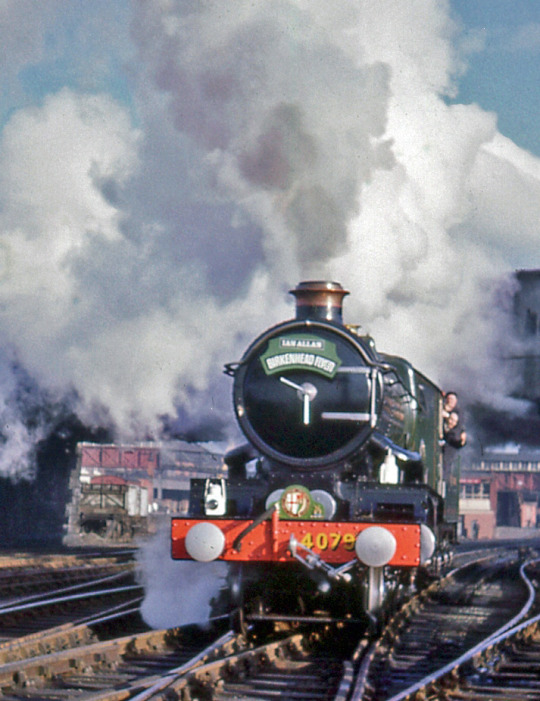
All the glorious “in your face, Gresley” p’wnship below is copied directly from the Wikipedia article.
- - - - - - - - - -
“When introduced they were heralded as Britain's most powerful express passenger locomotive, being some 10% more powerful than the Stars. The first, No. 4073 Caerphilly Castle, made its debut at Paddington station on 23 August 1923. The choice of 4082 as Windsor Castle proved fortuitous as this locomotive was used to haul the royal train when King George V and Queen Mary visited Swindon Works in 1924, and much publicity was gained when the king was invited to drive the engine back from the works to the station before the return journey, with the Queen and several high-ranking GWR officers also on the footplate.[7]
During 1924, 4073 Caerphilly Castle was exhibited at the British Empire Exhibition at Wembley, alongside Sir Nigel Gresley's Flying Scotsman. The Great Western declared their engine to be more powerful than its bigger LNER rival, and in terms of tractive effort alone they were entitled to do so. As a result of this, GWR General Manager Sir Felix Pole proposed to LNER Southern Area General Manager Alexander Wilson that a trial of the two types should take place via an exchange arrangement.[9] The resulting trials commenced in April 1925 with 4079 Pendennis Castle representing the GWR on the Great Northern main line and 4474 Victor Wild representing the LNER on Great Western tracks. On the first morning Pendennis Castle was to work a 480-ton train from King's Cross to Doncaster, and LNER officials fully expected the smaller, lighter engine to encounter problems climbing Holloway Bank. However, railway writer Cecil J. Allen records that the GWR locomotive made a faster start from King's Cross to Finsbury Park than any LNER Pacific he had recorded up to that time,[9] and over the trial Pendennis Castle kept well within the scheduled time and used less coal, considerably denting LNER pride. For the LNER, Victor Wild was compared on the Cornish Riviera Express to 4074 Caldicot Castle and although it kept to time the longer wheelbase of the Pacific proved unsuited to the many curves on the route. Again the GWR took the honours with Caldicot Castle burning less fuel and always ahead of time, this being illustrated on the last 2 days of the trial by gaining 15 minutes on the schedule in both directions.[9]
In 1926, number 5000 Launceston Castle was loaned to the London, Midland and Scottish Railway where it ran trials between London and Carlisle. The locomotive fulfilled the LMS requirements so well that the latter first requested the GWR to build a batch of Castles for use on the West Coast Main Line, and, failing that, a full set of construction drawings. Both proposals were rejected by the GWR Board of Directors. The LMS eventually succeeded in gaining access to the design by recruiting William Stanier, the GWR's Works Manager at their main Swindon railway works to become the new Chief Mechanical Engineer for the LMS.[10]”
#ttte#real true railway stuff#i'm cracking up#way to be graceful subtle and not hang on to the past there GORDON#<3#ttte gordon#this wikipedia deep dive brought to you mainly by T23... all her fault... that i've got all these tabs open rn
13 notes
·
View notes
Text
50 Great Thrillers by Women, as recommended by 10 of the UK’s female crime writers
Sophie Hannah:
Summertime by Liz Rigbey. Follows a woman who loses her baby and whose father unexpectedly drowns. When her husband and sister close ranks against her, she begins to suspect they are lying to her.
The Spider’s House by Sarah Diamond. Also published as In the Spider’s House. When Anna Howell discovers that a 1960s child murderess was the previous resident of her old cottage, her marriage, sanity and life come under threat.
Hidden by Katy Gardner. When a young mother’s seven-year-old daughter disappears, she finds herself questioning everything in her life. Then a police officer starts asking about the murder of a woman 14 months earlier …
A Shred of Evidence by Jill McGown. DI Judy Hill and DCI Lloyd investigate the murder of a 15-year-old girl on a patch of open parkland in the centre of town.
Searching for Shona by Margaret Jean Anderson
The wealthy Marjorie Malcolm-Scott trades suitcases, destinations and identities with orphan Shona McInnes, as children are evacuated from Edinburgh at the start of the second world war.
Val McDermid:
The Franchise Affair by Josephine Tey. A teenage war orphan accuses two women of kidnap and abuse, but something about her story doesn’t add up.
Rubbernecker by Belinda Bauer. The Booker-longlisted author of Snap follows it up with the tale of a medical student with Asperger’s who attempts to solve a murder.
The Field of Blood by Denise Mina. The first in the Paddy Meehan series sees the reporter looking into the disappearance of a child from his Glasgow home, with evidence pointing the police towards two young boys.
A Fatal Inversion by Barbara Vine. Writing under her pen name, Ruth Rendell tells of the discovery of a woman and child in the animal cemetery at Wyvis Hall, 10 years after a group of young people spent the summer there.
When Will There Be Good News? by Kate Atkinson. In the third Jackson Brodie book, a man is released from prison 30 years after he butchered the mother and siblings of a six-year-old girl in the Devon countryside.
Ann Cleeves:
Little Deaths by Emma Flint. Inspired by the real case of Alice Crimmins, this tells of a woman whose two children go missing from her apartment in Queens.
The Dry by Jane Harper. During Australia’s worst drought in a century, three members of one family in a small country town are murdered, with the father believed to have killed his wife and son before committing suicide.
Devices and Desires by PD James. Adam Dalgliesh takes on a serial killer terrorising a remote Norfolk community.
The End of the Wasp Season by Denise Mina. Heavily pregnant DS Alex Morrow investigates the violent death of a wealthy woman in Glasgow.
Fire Sale by Sara Paretsky. The inimitable VI Warshawski takes over coaching duties of the girls’ basketball team at her former high school, and investigates the explosion of the flag manufacturing plant where one of the girl’s mothers works.
Sharon Bolton:
Gone by Mo Hayder. In Hayder’s fifth thriller featuring Bristol DI Jack Caffrey, he goes after a car-jacker who is taking vehicles with children in them.
Gentlemen and Players by Joanne Harris. A murderous revenge is being plotted against the boys’ grammar school in the north of England where eccentric Latin master Roy Straitley is contemplating retirement.
The Shining Girls by Lauren Beukes. A time-travelling, murderous war veteran steps through the decades to murder extraordinary women – his “shining girls” – in Chicago, in this high-concept thriller.
The Wicked Girls by Alex Marwood. Two women who were sentenced for murdering a six-year-old when they were children meet again as adults, when one discovers the body of a teenager.
Apple Tree Yard by Louise Doughty. Married scientist Yvonne, who is drawn into a passionate affair with a stranger, is on trial for murder.
Sarah Ward:
A Place of Execution by Val McDermid. Journalist Catherine Heathcote investigates the disappearance of a 13-year-old girl in the Peak District village of Scarsdale in 1963.
The Crossing Places by Elly Griffiths. Forensic archaeologist Dr Ruth Galloway investigates the discovery of a child’s bones near the site of a prehistoric henge on the north Norfolk salt marshes.
The Ice House by Minette Walters. A decade after Phoebe Maybury’s husband inexplicably vanished, a corpse is found and the police become determined to charge her with murder.
The Liar’s Girl by Catherine Ryan Howard. When a body is found in Dublin’s Grand Canal, police turn to the notorious Canal Killer for help. But the imprisoned murderer will only talk to the woman he was dating when he committed his crimes.
This Night’s Foul Work by Fred Vargas (translated by Sian Reynolds). Commissaire Adamsberg investigates whether there is a connection between the escape of a murderous 75-year-old nurse from prison, and the discovery of two men with their throats cut on the outskirts of Paris.
Elly Griffiths:
R in the Month by Nancy Spain. Sadly out of print, this is an atmospheric story set in a down-at-heel hotel in a postwar seaside town. The period detail is perfect and jokes and murders abound. This is the fourth book featuring the fantastic Miriam Birdseye, actress and rather slapdash sleuth.
The Daughter of Time by Josephine Tey. A gripping crime novel in which the detective never gets out of bed and the murder happened over 500 years ago. Griffith says: “I read this book as a child and was hooked – on Tey, crime fiction and Richard the Third.”
The Detective’s Daughter by Lesley Thomson. Cleaner Stella Darnell finds herself tidying up her detective father’s final, unfinished case, after he dies. It is the first in a series featuring Stella and her sidekick Jack, an underground train driver who can sense murder.
A Place of Execution by Val McDermid. Griffiths says: “I could have chosen any of Val’s novels, but this book, about a journalist revisiting a shocking 1960s murder, is probably my favourite because of its wonderful sense of time and place. It’s also pitch perfect about journalism, police investigation and life in a small community.”
He Said, She Said by Erin Kelly. An account of a rape trial at which nothing is quite as it seems. Griffiths says: “The story centres around a lunar eclipse, which also works wonderfully as a metaphor and image.”
Dreda Say Mitchell:
Sharp Objects by Gillian Flynn. The Gone Girl author’s debut follows journalist Camille’s investigation into the abduction and murder of two girls in her Missouri home town.
Dangerous Lady by Martina Cole. Cole’s first novel sees 17-year-old Maura Ryan taking on the men of London’s gangland.
The Mermaids Singing by Val McDermid. Clinical psychologist Dr Tony Hill is asked to profile a serial killer when four men are found mutilated and tortured.
Indemnity Only by Sara Paretsky. A client tells VI Warshawski he is a prominent banker looking for his son’s missing girlfriend. But VI soon discovers he’s lying, and that the real banker’s son is dead.
The St Cyr series by CS Harris. Mitchell has nominated the whole of this historical mystery series about Sebastian St Cyr, Viscount Devlin – master of disguises, heir to an earldom, and disillusioned army officer. It’s a bit of a cheat but we’ll let her have it.
Erin Kelly:
No Night Is Too Long by Barbara Vine. Tim Cornish thinks he has gotten away with killing his lover in Alaska. But then the letters start to arrive …
Broken Harbour by Tana French. The fourth in French’s sublime Dublin Murder Squad series, this takes place in a ghost estate outside Dublin, where a father and his two children have been found dead, with the mother on her way to intensive care.
Chosen by Lesley Glaister. When Dodie’s mother hangs herself, she has to leave her baby at home and go to bring her brother Jake back from the mysterious Soul Life Centre in New York.
A Savage Hunger by Claire McGowan. Forensic psychologist Paula Maguire investigates the disappearance of a girl, and a holy relic, from a remote religious shrine in the fictional Irish town of Ballyterrin.
The Cry by Helen Fitzgerald. Parents Joanna and Alistair start to turn against each other after their baby goes missing from a remote roadside in Australia.
Sarah Hilary:
The Hours Before Dawn by Celia Fremlin. A sleep-deprived young mother tries to stay sane while her fears grow about the family’s new lodger, in this 1950s lost classic.
Cruel Acts by Jane Casey. Leo Stone, sentenced to life in prison for the murder of two women, is now free and claims he is innocent. DS Maeve Kerrigan and DI Josh Derwen want to put him back in jail, but Maeve begins doubting his guilt – until another woman disappears.
Sex Crimes by Jenefer Shute. A lawyer’s New Year’s Eve pick-up spirals into an erotic obsession which leads to graphic cruelty.
Skin Deep by Liz Nugent. Nugent, whom Ian Rankin has compared to Patricia Highsmith, tells the story of a woman who has been passing herself off as an English socialite on the Riviera for 25 years – until the arrival of someone who knows her from her former life prompts an act of violence.
Cuckoo by Julia Crouch. Rose’s home and family start to fall apart when her best friend Polly comes to stay.
Louise Candlish:
The Murder of Roger Ackroyd by Agatha Christie. Christie’s classic – with a legendary twist. The best Hercule Poirot?
The Two Faces of January by Patricia Highsmith. A conman on the run with his wife meets a young American who becomes drawn into the crime they commit.
Alias Grace by Margaret Atwood. The author of The Handmaid’s Tale imagines the life of the real 19th-century Canadian killer Grace Marks.
Little Face by Sophie Hannah. Hannah’s thriller debut is about a young mother who becomes convinced that, after spending two hours away from her baby, the infant is not hers.
Alys, Always by Harriet Lane. Newspaper subeditor Frances is drawn into the lives of the Kyte family when she hears the last words of the victim of a car crash, Alys Kyte.
8 notes
·
View notes

